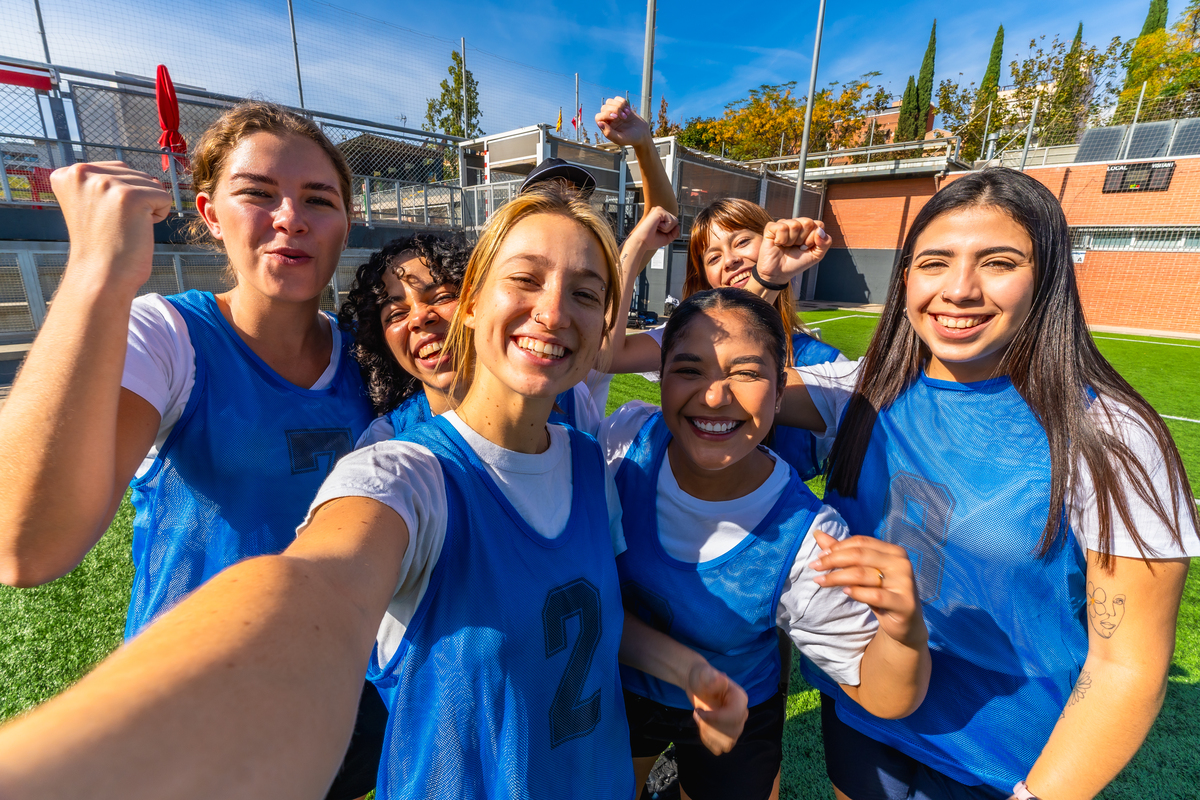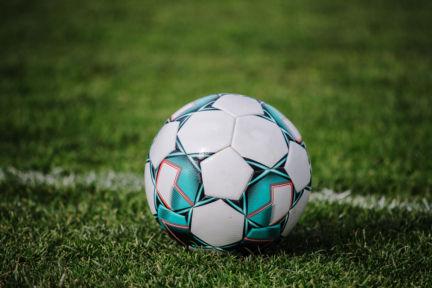The landscape of college athletics is undergoing a significant shift with the rise of Name, Image, and Likeness (NIL) marketing. As we explore this emerging trend, it becomes clear that micro-influencers are playing a crucial role in reshaping athlete-fan connections.
In the realm of NIL marketing, micro-influencers are proving to be invaluable assets. They offer a more personalized and engaging approach to connecting with fans, which is essential in college athletics. By leveraging their niche audiences, micro-influencers can help athletes build stronger, more meaningful relationships with their fans.
As we delve into the world of NIL marketing, it’s evident that micro-influencers are poised to dominate this space. Their ability to foster authentic connections between athletes and fans is revolutionizing the way brands approach marketing in college athletics.
Key Takeaways
- NIL marketing is transforming the college athletics landscape.
- Micro-influencers are key players in reshaping athlete-fan connections.
- A personalized approach to fan engagement is crucial in NIL marketing.
- Micro-influencers help athletes build stronger relationships with their fans.
- The rise of micro-influencers is changing how brands approach marketing in college athletics.
The Evolution of NIL Marketing in College Athletics
The landscape of college athletics has undergone a significant transformation since the introduction of NIL marketing. This change has been driven by pivotal events and adaptations within the industry.
The Historic NCAA Policy Change of 2021
In 2021, the NCAA made a landmark decision to allow college athletes to profit from their name, image, and likeness. This policy change marked a significant shift in the collegiate sports landscape, enabling athletes to capitalize on their personal brand.
Early Adoption and Million-Dollar Deals
The early adopters of NIL marketing witnessed substantial opportunities. Athletes began to secure endorsement deals, some worth millions. This trend highlighted the potential for athletes to earn significant income through NIL marketing.
Current NIL Landscape in American College Sports
Today, NIL marketing is an integral part of college athletics. The current landscape is characterized by:
- Increased athlete participation in endorsement deals
- Growing involvement of brands and marketers
- Emergence of new platforms and services catering to NIL marketing
Market Size and Growth Projections
The NIL market has shown remarkable growth. Projections indicate continued expansion, driven by increasing demand and the evolving regulatory landscape.
| Year | Market Size | Growth Rate |
|---|---|---|
| 2021 | $100M | - |
| 2022 | $500M | 400% |
| 2023 | $1B | 100% |
Key Players and Platforms
Several key players and platforms have emerged to facilitate NIL marketing. These include:
- Athlete marketing agencies
- NIL platforms and marketplaces
- Social media influencers and content creators
As the NIL landscape continues to evolve, it is essential to understand the dynamics at play. The growth of NIL marketing presents opportunities for athletes, brands, and marketers alike.
Understanding the Micro-Influencer Phenomenon
In the evolving digital ecosystem, micro-influencers have emerged as pivotal figures in college sports marketing. As we explore the dynamics of Name, Image, and Likeness (NIL) marketing, understanding the role and impact of micro-influencers becomes crucial.
Defining Micro-Influencers in Today’s Digital Ecosystem
Micro-influencers are individuals with a social media following that typically ranges from 1,000 to 100,000 followers. They are characterized by their high engagement rates and the niche audiences they cater to.
Follower Range and Engagement Metrics
The follower range of micro-influencers may be smaller compared to macro-influencers, but their engagement metrics often tell a different story. Micro-influencers usually have higher engagement rates due to their ability to connect personally with their audience.
Platform Preferences Among College Athletes
College athletes tend to prefer platforms like Instagram and TikTok for their NIL marketing efforts. These platforms allow for diverse content creation and have features that facilitate high engagement rates.
The Power of Niche Audiences in College Sports
Niche audiences are a significant advantage for micro-influencers. By targeting specific interests within college sports, micro-influencers can offer brands a more focused marketing approach.
Engagement Rates vs. Follower Counts: The Numbers Don’t Lie
Let’s examine the comparative effectiveness of micro-influencers through a detailed table:
| Influencer Type | Follower Count | Average Engagement Rate |
|---|---|---|
| Micro-Influencer | 10,000 | 4.5% |
| Macro-Influencer | 1,000,000 | 2.0% |
This table highlights that while macro-influencers have a larger following, micro-influencers often achieve higher engagement rates, making them valuable for targeted marketing campaigns.
Why Micro-Influencers Might Revolutionize NIL Partnerships
Micro-influencers are poised to revolutionize NIL partnerships, offering a fresh perspective on athlete-brand collaborations. As we delve into the potential of micro-influencers, it becomes clear that their impact on NIL marketing is multifaceted.
Authenticity and Genuine Fan Connections
One of the primary advantages of micro-influencers is their ability to foster authenticity and genuine fan connections. This is particularly evident in college communities where athletes are often revered as local heroes.
Local Hero Effect in College Communities
The local hero effect in college communities plays a significant role in amplifying the influence of micro-influencers. Fans and alumni are more likely to engage with content created by athletes they perceive as local heroes, thereby increasing the effectiveness of NIL partnerships.
Trust Factors Among Gen Z Consumers
Gen Z consumers place a high value on authenticity and trust. Micro-influencers, with their niche audiences and personalized content, are better positioned to build trust with this demographic. As a result, NIL partnerships facilitated by micro-influencers can lead to more meaningful and lasting brand connections.
Cost-Effectiveness for Brands with Limited Budgets
Partnering with micro-influencers is often more cost-effective for brands operating with limited budgets. Unlike macro-influencers or professional athletes, micro-influencers typically charge lower fees for collaborations, making them an attractive option for brands looking to maximize their ROI.
| Influencer Type | Average Cost per Post | Engagement Rate |
|---|---|---|
| Micro-Influencers | $100-$500 | 5%-10% |
| Macro-Influencers | $1,000-$5,000 | 2%-5% |
| Professional Athletes | $5,000-$20,000 | 1%-3% |
Diversification of Athletic Representation
Micro-influencers also contribute to the diversification of athletic representation in NIL marketing. By partnering with athletes from various sports and backgrounds, brands can reach a broader and more diverse audience, enhancing their overall marketing strategy.
In conclusion, micro-influencers have the potential to revolutionize NIL partnerships by offering authenticity, cost-effectiveness, and diversification. As the landscape of college athletics continues to evolve, embracing micro-influencers could be a key strategy for brands looking to make a meaningful impact.
The Economics of Micro-Influencer NIL Partnerships
As we dive into the economics of micro-influencer NIL partnerships, it becomes clear that these collaborations offer a fresh perspective on brand engagement. By leveraging athletes with niche followings, brands can tap into highly engaged audiences without the hefty price tags associated with macro-influencers.
Budget-Friendly Campaign Structures
Micro-influencer NIL partnerships allow for more flexible and budget-friendly campaign structures. Brands can collaborate with multiple micro-influencers, creating a diverse and robust marketing strategy that reaches various niche audiences.
ROI Comparisons: Micro vs. Macro Athletes
When comparing ROI, micro-influencers often outperform their macro counterparts due to their highly engaged audiences. Let’s examine the numbers:
| Influencer Type | Average Engagement Rate | Cost per Engagement |
|---|---|---|
| Micro-Influencers | 4.5% | $0.05 |
| Macro-Influencers | 2.1% | $0.10 |
Conversion Metrics That Matter
When evaluating the success of micro-influencer NIL partnerships, brands should focus on conversion metrics such as website traffic, sales, and brand mentions. These metrics provide a clearer picture of the campaign’s impact on the bottom line.
Engagement Cost Analysis
Engagement cost analysis is crucial in determining the effectiveness of micro-influencer partnerships. By comparing the cost per engagement across different campaigns, brands can optimize their marketing strategies.
Long-Term Value Creation for Emerging Brands
Micro-influencer NIL partnerships offer emerging brands a pathway to long-term value creation. By building authentic connections with athletes and their audiences, brands can establish a loyal customer base that drives sustained growth.
Case Studies: Successful Micro-Influencer NIL Campaigns in America
The rise of micro-influencers in NIL marketing has led to some remarkable success stories across America. As brands continue to explore the potential of partnering with college athletes, micro-influencers are proving to be valuable assets in reaching niche audiences.
Regional Brand Partnerships That Exceeded Expectations
Regional brands have found significant success by partnering with micro-influencers in their local markets. For instance, a regional sports apparel brand collaborated with a college soccer star to promote their new line of cleats. The campaign resulted in a 25% increase in sales within the target region.
Niche Sport Success Stories Beyond Football and Basketball
Micro-influencers in niche sports like lacrosse and rowing have helped brands tap into dedicated fan bases. A notable example is a brand that partnered with a college lacrosse player to promote their equipment. The campaign led to a 40% increase in brand awareness among the lacrosse community.
“Partnering with micro-influencers has been a game-changer for our brand. We’ve seen a significant increase in engagement and sales.” – Marketing Director, Regional Sports Apparel Brand
Community-Focused Initiatives That Built Brand Loyalty
Micro-influencers have also been instrumental in community-focused initiatives that foster brand loyalty. By partnering with local athletes, brands can create authentic connections with their target audience.
Local Business Collaborations
Local businesses have benefited from collaborating with micro-influencers to promote their products or services. For example, a local coffee shop partnered with a college athlete to offer a specialty drink, resulting in increased foot traffic and sales.
Cause-Related Marketing Wins
Micro-influencers have also been used in cause-related marketing campaigns, promoting social causes and charitable initiatives. A brand partnered with a college athlete to raise awareness for a local food bank, resulting in a significant increase in donations.
| Campaign Type | Brand | Results |
|---|---|---|
| Regional Brand Partnership | Sports Apparel Brand | 25% increase in sales |
| Niche Sport Promotion | Lacrosse Equipment Brand | 40% increase in brand awareness |
| Cause-Related Marketing | Local Food Bank | Significant increase in donations |
Challenges and Limitations in the Micro-Influencer NIL Space
As micro-influencers continue to reshape the NIL marketing landscape, several challenges have emerged that require careful consideration. The integration of micro-influencers into NIL marketing strategies, while promising, is not without its difficulties.
Measurement and Attribution Issues
One of the primary challenges in micro-influencer NIL marketing is accurately measuring the impact and attributing the success of these campaigns. Unlike larger influencers, micro-influencers often lack the sophisticated analytics tools that can provide clear ROI metrics.
Scalability Concerns for National Brands
While micro-influencers offer a localized and often highly engaged audience, scaling these efforts for national brands can be problematic. Coordinating multiple micro-influencers across different regions while maintaining brand consistency is a significant challenge.
Compliance and Regulation Navigation
NIL marketing is subject to a complex and evolving regulatory landscape. Micro-influencer partnerships must comply with NCAA regulations, state laws, and university policies, which can vary significantly.
State-by-State Regulatory Differences
The regulatory environment for NIL marketing differs from state to state, creating a compliance challenge for micro-influencers and brands operating across multiple regions.
University-Specific Guidelines
In addition to state regulations, universities often have their own guidelines governing NIL activities. Micro-influencers and brands must navigate these institution-specific rules to avoid potential violations.
| Challenge | Description | Impact on NIL Marketing |
|---|---|---|
| Measurement Issues | Difficulty in accurately measuring campaign impact | Complicates ROI assessment |
| Scalability Concerns | Challenges in scaling micro-influencer efforts nationally | Limitations in brand reach and consistency |
| Regulatory Compliance | Navigating complex and varying regulations | Risk of non-compliance and potential penalties |
Strategic Implementation: How Brands Can Leverage Athlete Micro-Influencers
Athlete micro-influencers are redefining the NIL marketing landscape, offering brands a pathway to authentic connections with their target audiences. To effectively leverage these influencers, brands must adopt a strategic approach that aligns with their marketing objectives.
Identifying the Right Athletes for Your Brand
Selecting the appropriate athlete micro-influencer is crucial for the success of NIL marketing campaigns. This involves a thorough assessment of both quantitative and qualitative factors.
Alignment Assessment Frameworks
To identify suitable athlete micro-influencers, brands can utilize alignment assessment frameworks. These frameworks evaluate factors such as:
- Athlete’s niche audience alignment with brand target market
- Content relevance and quality
- Engagement rates and audience interaction
Beyond the Numbers: Qualitative Factors
Beyond quantitative metrics, qualitative factors play a significant role in selecting the right athlete micro-influencer. These include:
- Athlete’s values and brand affinity
- Content authenticity and storytelling ability
- Consistency in posting and engaging with their audience
| Qualitative Factor | Description | Importance Level |
|---|---|---|
| Athlete's Values | Alignment of athlete's personal values with brand values | High |
| Content Authenticity | Genuineness and relatability of the content created by the athlete | High |
| Consistency | Regularity of posting and engaging with the audience | Medium |
Creating Authentic Campaign Frameworks
Once the right athlete micro-influencer is identified, brands must create authentic campaign frameworks that resonate with the target audience. This involves:
- Collaborating with the athlete to develop content that aligns with their personal brand
- Encouraging storytelling and user-generated content
- Utilizing multiple channels for campaign promotion
- marketing goals, fostering authentic connections with their target audiences.
By strategically implementing these approaches, brands can effectively leverage athlete micro-influencers to achieve their NIL marketing goals, fostering authentic connections with their target audiences.
The Future Landscape: How Micro-Influencers Might Reshape College Sports Marketing
As we look ahead to the next few years, it’s clear that micro-influencers are poised to revolutionize college sports marketing. The evolving landscape of Name, Image, and Likeness (NIL) policies continues to create new opportunities for athletes, brands, and fans alike.
Predicted Trends for 2023-2025
Several key trends are expected to shape the future of micro-influencer marketing in college sports. These include:
- Increased focus on niche sports and athletes
- Greater emphasis on long-term partnerships between brands and micro-influencers
- More sophisticated use of analytics to measure campaign effectiveness
Technology Innovations Empowering Smaller Athletes
Technology is playing a crucial role in empowering micro-influencers in college sports. Two key areas of innovation are:
NIL Marketplaces and Platforms
NIL marketplaces and platforms are connecting athletes with brands, making it easier for micro-influencers to find and secure partnerships.
Analytics Tools for Performance Tracking
Advanced analytics tools are helping micro-influencers demonstrate their value to brands by providing detailed insights into engagement rates, reach, and other key performance metrics.
The Democratization of Athletic Sponsorship
The rise of micro-influencers is democratizing athletic sponsorship, allowing more athletes to benefit from brand partnerships. This shift is creating new opportunities for athletes in niche sports and those who may not have had access to major sponsorship deals in the past.
| Trend | Impact | Beneficiaries |
|---|---|---|
| Increased focus on niche sports | More opportunities for athletes in less mainstream sports | Athletes, Niche sports fans |
| Long-term partnerships | Deeper brand-athlete connections, more stable revenue streams | Brands, Micro-influencers |
| Advanced analytics | Better measurement of campaign effectiveness | Brands, Athletes, Marketplaces |
Conclusion: The Micro-Influencer Revolution in NIL Marketing
The rise of micro-influencers in NIL marketing is transforming the landscape of college athletics. As we’ve explored, micro-influencers offer a unique blend of authenticity, niche audience engagement, and cost-effectiveness that can benefit athletes, brands, and fans alike.
In the evolving world of NIL marketing, micro-influencers are poised to dominate by fostering genuine connections between athletes and their fanbase. By leveraging their smaller, highly engaged audiences, micro-influencers can deliver more targeted and impactful campaigns for brands.
As college athletics continues to grow, the micro-influencer revolution will likely play a pivotal role in shaping the future of NIL marketing. Brands and athletes who adapt to this trend will be better positioned to capitalize on the opportunities emerging in this space.
FAQ
What is NIL marketing, and how does it relate to college athletics?
NIL marketing refers to the practice of college athletes promoting products or services in exchange for compensation, made possible by the NCAA’s policy change in 2021. We facilitate legal and transparent opportunities for college athletes, strengthening trust and connection between fans and emerging sports talents.
Who are micro-influencers, and why are they important in NIL marketing?
Micro-influencers are individuals with a smaller, highly engaged audience on social media, often within a specific niche. They are important in NIL marketing because they offer authenticity and genuine fan connections, which are valuable for brands seeking to partner with college athletes.
How do micro-influencers differ from traditional influencers or macro athletes?
Micro-influencers typically have a smaller follower count compared to traditional influencers or macro athletes, but they often have higher engagement rates and a more targeted audience. This makes them attractive for brands with limited budgets and those seeking to partner with athletes who have a strong local following.
What are the benefits of partnering with micro-influencers in NIL marketing?
Partnering with micro-influencers can provide cost-effectiveness, diversification of athletic representation, and the potential for long-term value creation for emerging brands. Micro-influencers can also offer a more authentic and personal connection with their audience, which can be beneficial for brands seeking to build brand loyalty.
How can brands measure the success of their NIL marketing campaigns with micro-influencers?
Brands can measure the success of their NIL marketing campaigns with micro-influencers by tracking engagement metrics, conversion rates, and other key performance indicators. We also recommend using analytics tools to monitor campaign performance and adjust strategies accordingly.
What are some challenges associated with micro-influencer NIL marketing?
Some challenges associated with micro-influencer NIL marketing include measurement and attribution issues, scalability concerns for national brands, and compliance and regulation navigation. Brands must also consider state-by-state regulatory differences and university-specific guidelines when implementing micro-influencer NIL campaigns.
How can brands identify the right micro-influencers for their NIL marketing campaigns?
Brands can identify the right micro-influencers by using alignment assessment frameworks and considering qualitative factors beyond just follower counts. We recommend evaluating an athlete’s values, audience demographics, and content quality to ensure alignment with the brand’s goals and target audience.






Leave a Comment